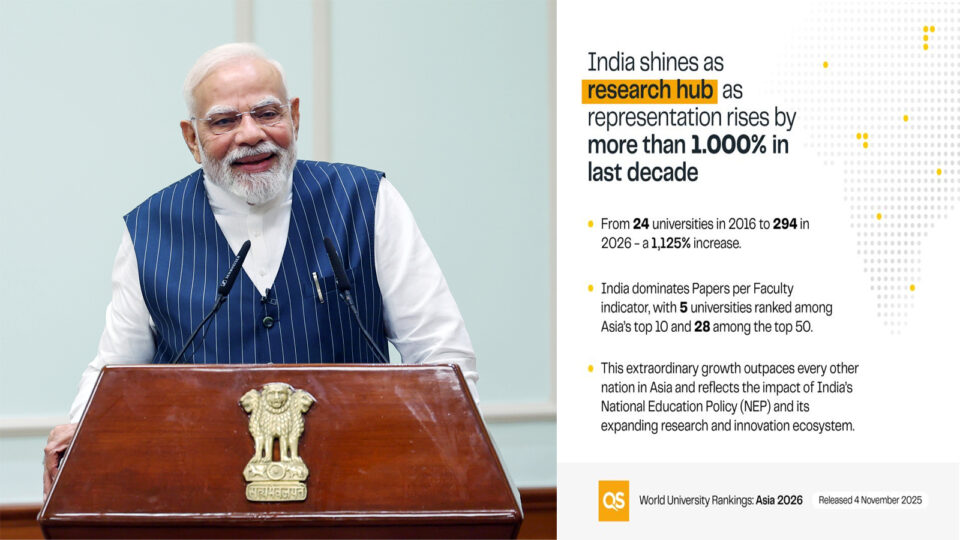Prime Minister Narendra Modi lauded the record rise in the number of Indian universities featured in the QS Asia University Rankings 2026, calling it a testament to India’s decade-long transformation in higher education, research, and innovation. India’s representation has soared by 1,125%, from 24 institutions in 2016 to 294 in 2026, making it Asia’s second-most represented nation after China. In his post on X, PM Modi reaffirmed the government’s commitment to ensuring quality education, research, and institutional capacity-building under the National Education Policy (NEP) 2020. The rankings highlight seven Indian institutions in Asia’s top 100 — led by IIT Delhi (59th), followed by IISc Bangalore, IIT Madras, IIT Bombay, IIT Kanpur, IIT Kharagpur, and the University of Delhi — reflecting India’s expanding academic excellence beyond the IIT ecosystem. Matteo Quacquarelli of QS praised India’s remarkable rise, attributing it to NEP 2020’s emphasis on collaboration, innovation, and research productivity. With five Indian institutions ranking among Asia’s top 10 for papers per faculty and 28 in the top 50, India’s growing research strength is evident. Despite some ranking fluctuations, analysts see this as part of Asia’s dynamic higher education evolution. As QS CEO Jessica Turner noted, India’s progress demonstrates globally relevant, locally empowering education reforms, positioning the nation as a rising knowledge powerhouse aligned with the vision of Atmanirbhar Bharat.
#IndiaEducation #QSRankings2026 #HigherEducation #ResearchInnovation #NEP2020 #AtmanirbharBharat #GlobalExcellence #KnowledgePowerhouse

